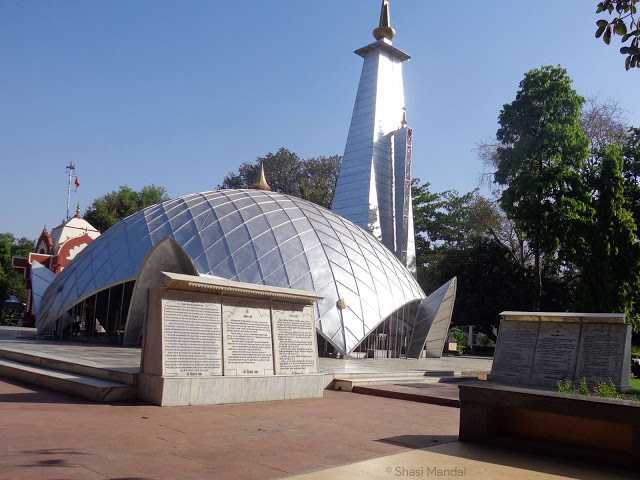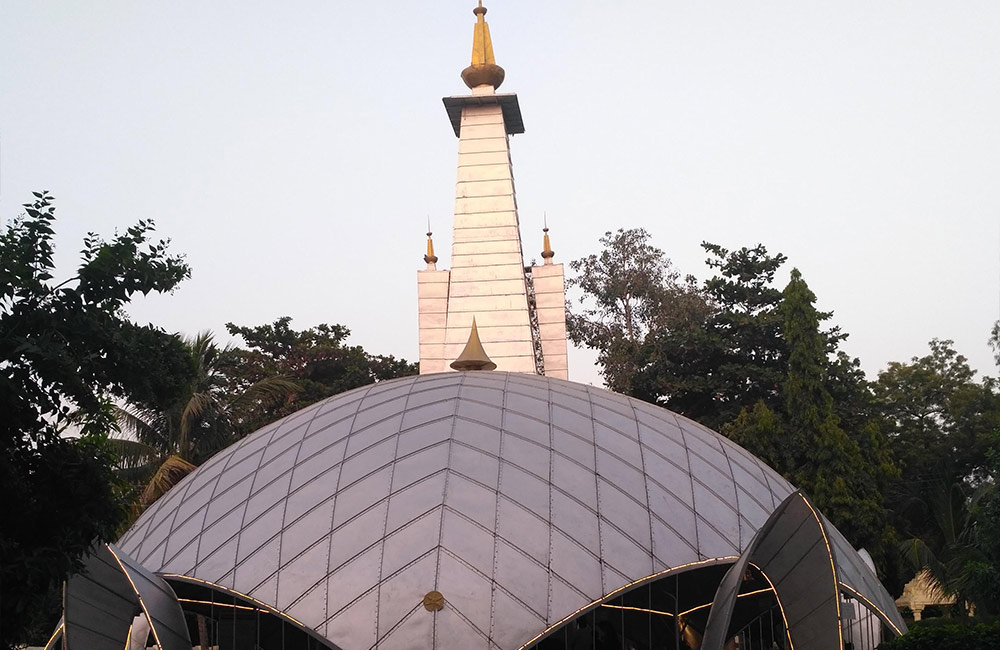 EME seems to be a strange name for a temple. It stands for Electrical and Mechanical Corps, in honor of the people who built the temple. A symbol of the secularity practiced in the Indian Army, the EME Temple in Vadodara is an aluminum-clad abode, constructed at the intersection of ancient and modern. Also known as the Dakshinamurthy temple, it primarily houses a massive idol of Lord Shiva, along with a miniature Lord Ganesha (specially brought in from Mahabalipuram). There is also a silver arch with the holy words "Om Namah Shivaya" engraved on it.
EME seems to be a strange name for a temple. It stands for Electrical and Mechanical Corps, in honor of the people who built the temple. A symbol of the secularity practiced in the Indian Army, the EME Temple in Vadodara is an aluminum-clad abode, constructed at the intersection of ancient and modern. Also known as the Dakshinamurthy temple, it primarily houses a massive idol of Lord Shiva, along with a miniature Lord Ganesha (specially brought in from Mahabalipuram). There is also a silver arch with the holy words "Om Namah Shivaya" engraved on it.
It is a popular opinion among archaeologists that this temple is unique regarding its design, concept and geodesic design covered with war scraps and aluminum sheets. The unique aspect is how the temple supports secularism by incorporating holy symbols from every religion in its structure. The Kalash on the top symbolizes Hinduism. The Dome signifies Islam. The Tower represents Christianity. The Golden-structure above the tower expresses Buddhism. The Entrance stands for Jainism.
The Indian Army brings together a diverse set of people from all over the nation, each with their culture, traditions, and religions. Since it would be difficult to accommodate all kinds of places of worship for the varied faiths that these people adhere to, it was thought to build a structure that integrates a relic from every dominant religion of India. In 1966, an EME Corp initiated this idea in the army quarters of Vadodara, which led to the construction of a one-of-a-kind sacred abode in the history of the world, where persons of any faith could come together under one roof. This is the beauty and specialty of the EME Temple, located in the western state of Gujarat. It should form a crucial part of your itinerary if you are in Vadodara and want a place to unwind or feel spiritually uplifted at!
The Indian Army brings together a diverse set of people from all over the nation, each with their culture, traditions, and religions. Since it would be difficult to accommodate all kinds of places of worship for the varied faiths that these people adhere to, it was thought to build a structure that integrates a relic from every dominant religion of India. In 1966, an EME Corp initiated this idea in the army quarters of Vadodara, which led to the construction of a one-of-a-kind sacred abode in the history of the world, where persons of any faith could come together under one roof. This is the beauty and specialty of the EME Temple, located in the western state of Gujarat. It should form a crucial part of your itinerary if you are in Vadodara and want a place to unwind or feel spiritually uplifted at!


No comments:
Post a Comment